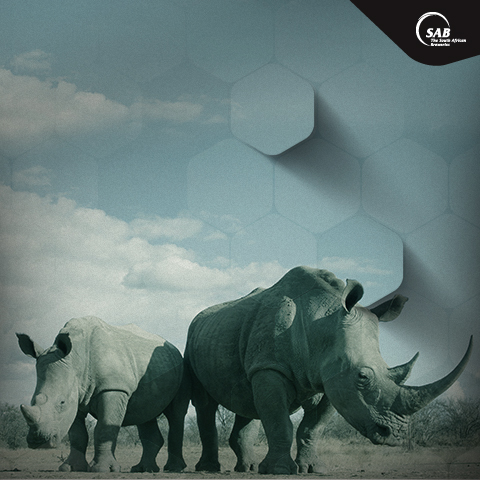
Why The Huge Demand For Rhino Horn?
Michael ‘t Sas-Rolfes wrote a thought-provoking piece for the Conservation Economist (Independent) in answer to the following question: “What has caused the recent upsurge in rhino poaching in South Africa?” A passionate wildlife enthusiast, Michael chose to study business and economics so as to enter into the fight using the tools that are controlling the trade.
He has studied conservation trends and the associated economy for decades and his research has returned some powerful points that we, as the public, must take into consideration. Here is a summary of his findings and perceptions.
The Facts Are Clear
Governments across the globe have been trying to ban the trade in rhino horn since 1977 via CITES (the UN Convention on International Trade in Endangered Species). Regardless of the ban, rhinos have still been poached and it seems that there are no real deterrents for poachers and their crews in terms of consequences. The best option for their safety is physical protection, which is costly and difficult to maintain.
Dipping into his economic expertise, Michael goes on to explain how the price of rhino horn is symbolic of what’s going on within the market. When prices are rising, there is an influx in demand and we’ll subsequently see an increase in poaching activity. A drop in prices describes the converse.
Why do we see these significant fluctuations?
Let’s Look Back in Time for Clues
Rhinos have been here for centuries, but they’ve also been poached for a very long time too, as far back as 80, 000 years. Rhino meat used to be a delicacy and the other body parts – horn included – were used as ornamental pieces or trophies signifying exceptional hunting prowess. Rhino horn was also already being used for medicinal purposes, and ornamental use extended to hand-carved bowls in China and dagger handles in Yemen.
Traditional Chinese Medicine (TCM) has always used rhino horn in remedies for colds, inflammation, fevers and toxicity. The Republic of China banned tiger and rhino products in TCM in 1993 and most “new-age” practitioners use only plant based ingredients in their medicine. But practitioners who are firm followers of tradition do not agree with the changes in what has been practiced for over 2, 000 years, regardless of the ban. A survey conducted on patients in certain Chinese hospitals clearly displayed that they wouldn’t care about the ban on animal ingredients if it meant the difference between healing their ailments or not. The law and bans remain enforced and are very clear in China, but the same cannot be said for Vietnam. The laws in Vietnam are less clear and are not enforced with strict attention.
Turning Points in History
During the mid-1990s, change came in the form of East Asian states buckling under pressure from the US to ban the use of rhino horn in medicines. South Korea doubled their prices and the sale of rhino horn seemed to dissipate, as did the occurrences of poaching activity. At this stage, South Africa, Namibia and Zimbabwe were home to 90% of rhino populations. From this point until 2007, there were few incidences of poaching reported.
That was when we started seeing the spike in rhino poaching incidents and the demand for rhino horn went through the roof. In 2011 the retail value for 1kg of rhino horn reached a price of $65, 000, which has enticed underground cartels and organised crime units to become involved in the trade.
Why the spike in price? And why the incredible demand?
A lot of the demand is hailing from Vietnam and there is speculation that it’s linked to rhino horn being a cure for cancer. It’s also still being used for ornamental value and for carvings. But Michael has found a more stable and logical reason in the fact that Vietnam’s economic growth has escalated and locals are now more open to spending their money on less essential day-to-day items, such as traditional cures and medicines. Rhino horn is also quickly becoming very scarce, which makes it even more valuable.
If we look at the prices of rhino horn over the years, it’s clear that there hasn’t been a consistent flow, but there have been peaks and dips in line with major activity, such as the 1977 ban. This no doubt sent suppliers scrambling for stock to build up during this time. In 1993 an undercover operation and subsequent global pressure managed to close down the markets in China and Taiwan by 1995. One has to wonder whether or not the markets really did close as the need and demand for rhino horn returned with ferocity a decade later. With regards to TCM, only a small scraping of horn is used at a time, so medicinal practitioners could have made use of their personal stockpile over this time, only needing to replenish it again by the early to mid-2000s.
Where does this leave us?
By understanding the history of rhino horn use we can better understand where the demand is coming from and why. Market changes explain that it is just another commodity in the eyes of many consumers and business operators, but they also seem to dictate that tradition is deeply rooted in the need, or want, for horn. There was also probably no “closing” of rhino horn markets, but rather a period where stockpiles were used and the demand was slightly lower.
While there is significant information to support the sudden spike in poaching activity, does it leave us with any hope that the market will devour the entire rhino population before it closes? We can’t reduce the demand, we can protect the rhinos as much as possible, but this is not fool-proof, we could also legalise and monitor the trade of farmed horn, but is this a sustainable, long-term solution?
Most importantly, can we return to that lull in activity that was so prominent in the 1990s or are we witnessing the end of an era?



